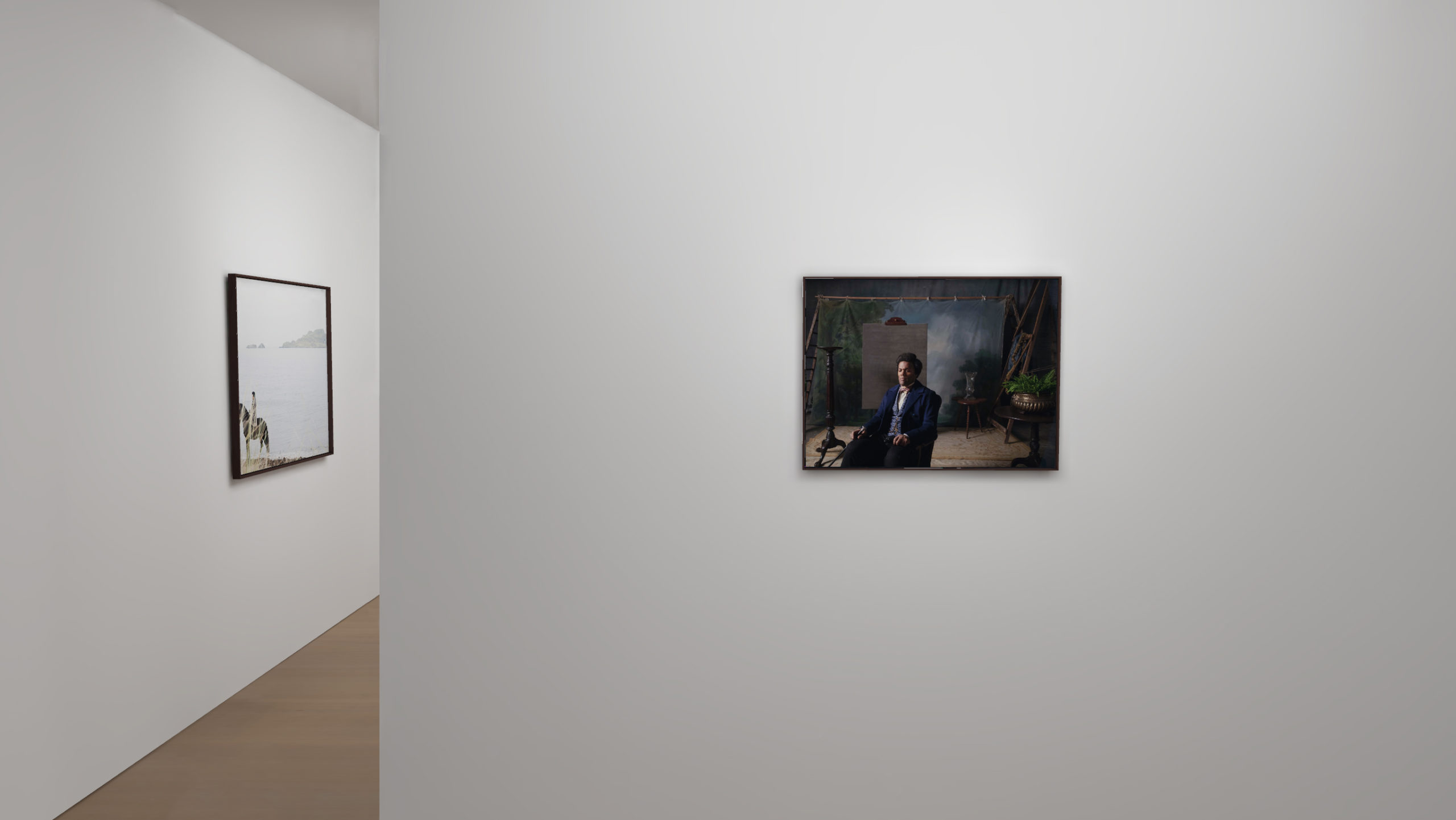Isaac Julien: Photographic works from Lessons of the Hour – Frederick Douglass
21 July–29 August 2020
‘One reason for making the work is reviewing what America is today, where it comes from.’ — Isaac Julien
Isaac Julien’s Lessons of the Hour is a poetic meditation on the life and times of Frederick Douglass (1818–1895), a visionary African American writer, abolitionist and a freed slave, who was also the most photographed man of the nineteenth century.
Conceived of as a ten-screen installation (excerpted above is the newly made single screen), which premiered at the Memorial Art Gallery in Rochester, New York, in 2019, and a number of related photographic artworks, a selection of which are on view in this exhibition, Lessons of the Hour reflects on issues of social justice that shaped Douglass’ life’s work. It is informed by some of Douglass’ most important speeches, such as Lessons of the Hour (in which he addressed the shocking phenomenon of lynching in the post-Civil War American South), What to the Slave Is the 4th of July? and Lecture on Pictures, a text that connects picture-making and photography to his vision of how technology could influence human relations. For Douglass, photography was envisaged as a way of achieving autonomy over the way in which African Americans could be represented. It signalled not only truth but also empowerment. Julien’s work gives expression to the zeitgeist of Douglass’ era, his legacy and the ways in which his story may be viewed through a contemporary lens. It is a forceful suggestion that the lessons of the abolitionist’s hour have yet to be learned.
Created in consultation with Douglass scholar Celeste-Marie Bernier of the University of Edinburgh, and based on original archival sources, letters and writings, the work imagines the person of Frederick Douglass through a series of tableaux vivants. It gives life to Douglass’ relationships with other cultural icons of the time. These characters were chosen by the artist for being representatives of ideals of equality and pioneers in the history of civil rights, and include African American photographer JP Ball; Douglass’ wives Anna Murray and Helen Pitts; and Anna and Ellen Richardson, the English Quakers who enabled Douglass to return to the United States as a free man.
1
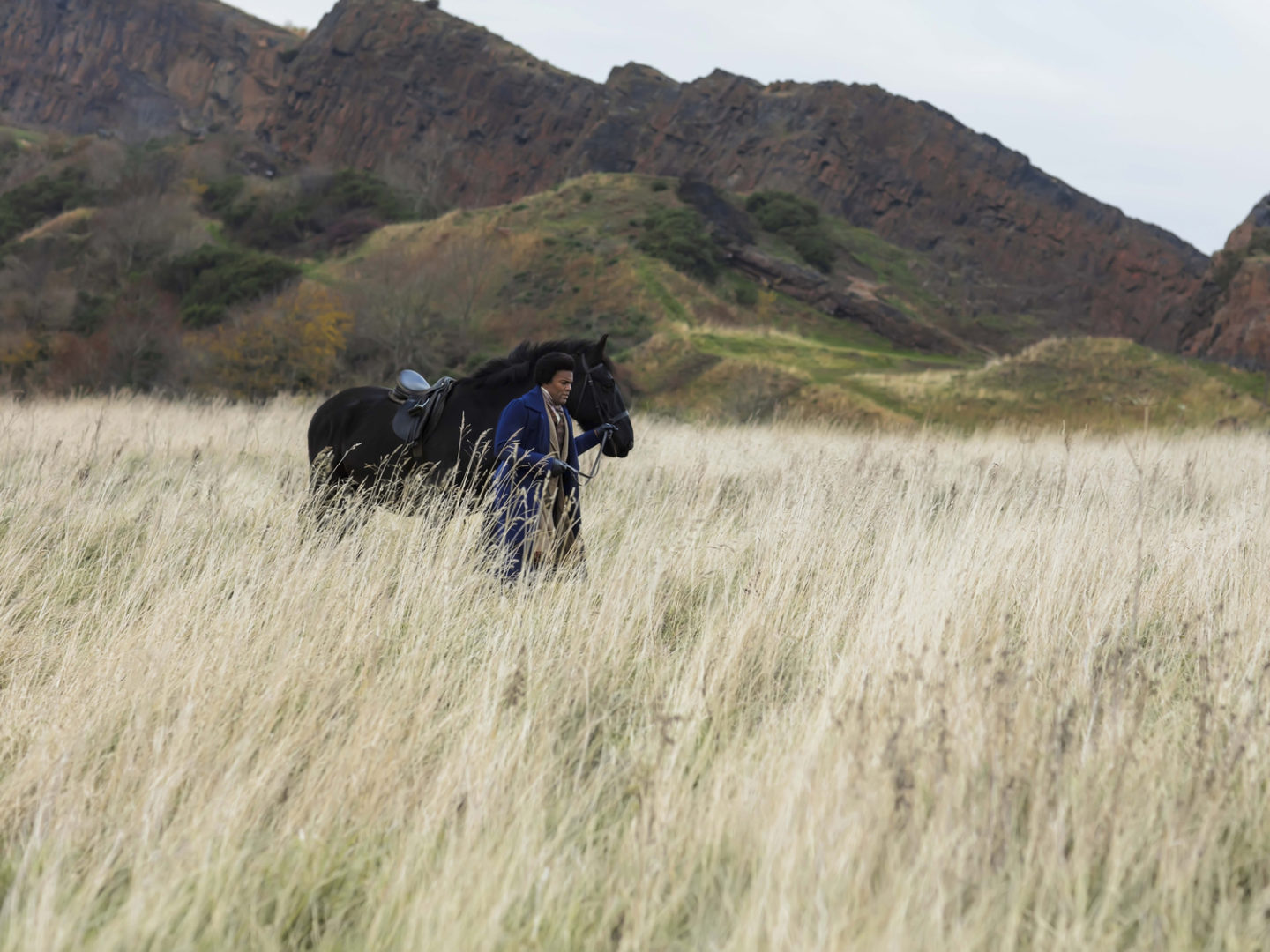
Framed photograph on matt archival paper mounted on aluminium
160 x 213.3 cm
63 x 84 in
Edition of 6 plus 1 artist's proof
Isaac Julien, Lessons of the Hour (Lessons of the Hour), 2019
More info‘Rightly viewed, the whole soul of man is a sort of picture gallery, a grand panorama, in which all the great facts of the universe, in tracing things of time and things of eternity, are painted.’— Frederick Douglass
Born in 1818, Frederick Douglass was a visionary African American abolitionist, a prominent orator and a freed slave who became a fierce social reformer and the most photographed man of the nineteenth century. Douglass developed his oratorical skills as a preacher before embarking on anti-slavery campaigns across the northern United States and the United Kingdom. Shot at sites in the US and UK that hold historical significance to the abolitionist’s life, Lessons of the Hour places Douglass (portrayed by Ray Fearon, a member of the Royal Shakespeare Company) within settings alternately pastoral, domestic, and public, from sublime natural landscapes to meticulous recreations of nineteenth century interiors. Its resonating scenes retell and reconstruct aspects of the history of abolitionism, the suffrage movement and the invention of film itself.
Lessons of the Hour is the title of Douglass’ final delivered speech, in which he addressed lynching, suffrage and legacies of colonisation in the post-Civil War American South.
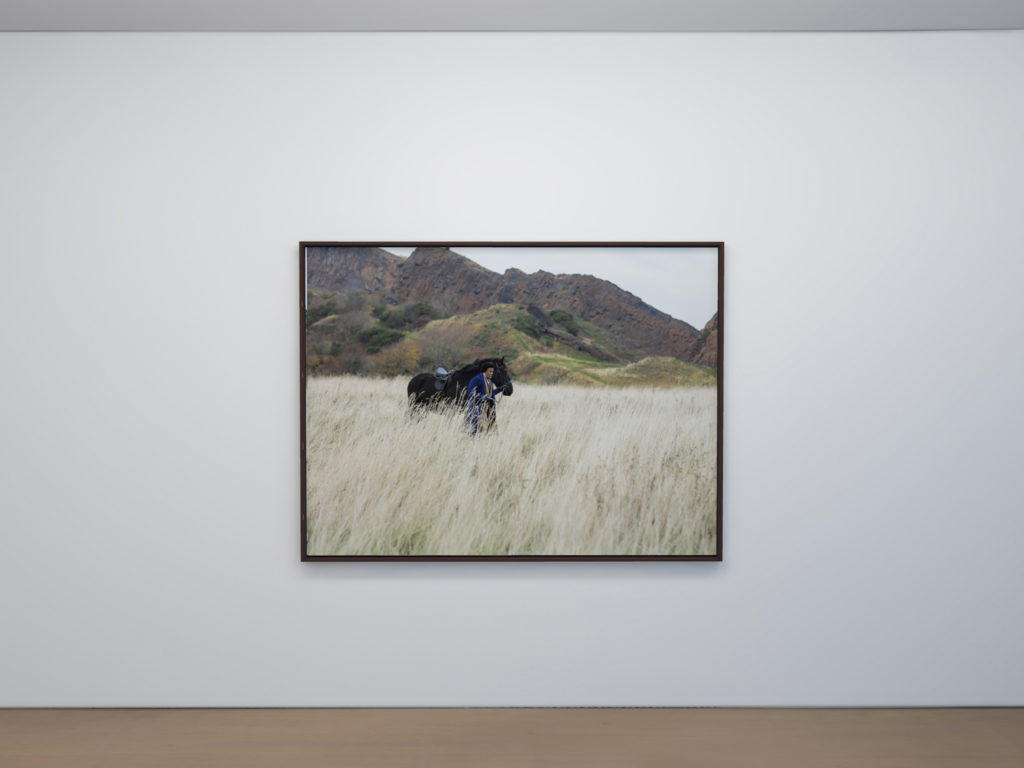
6
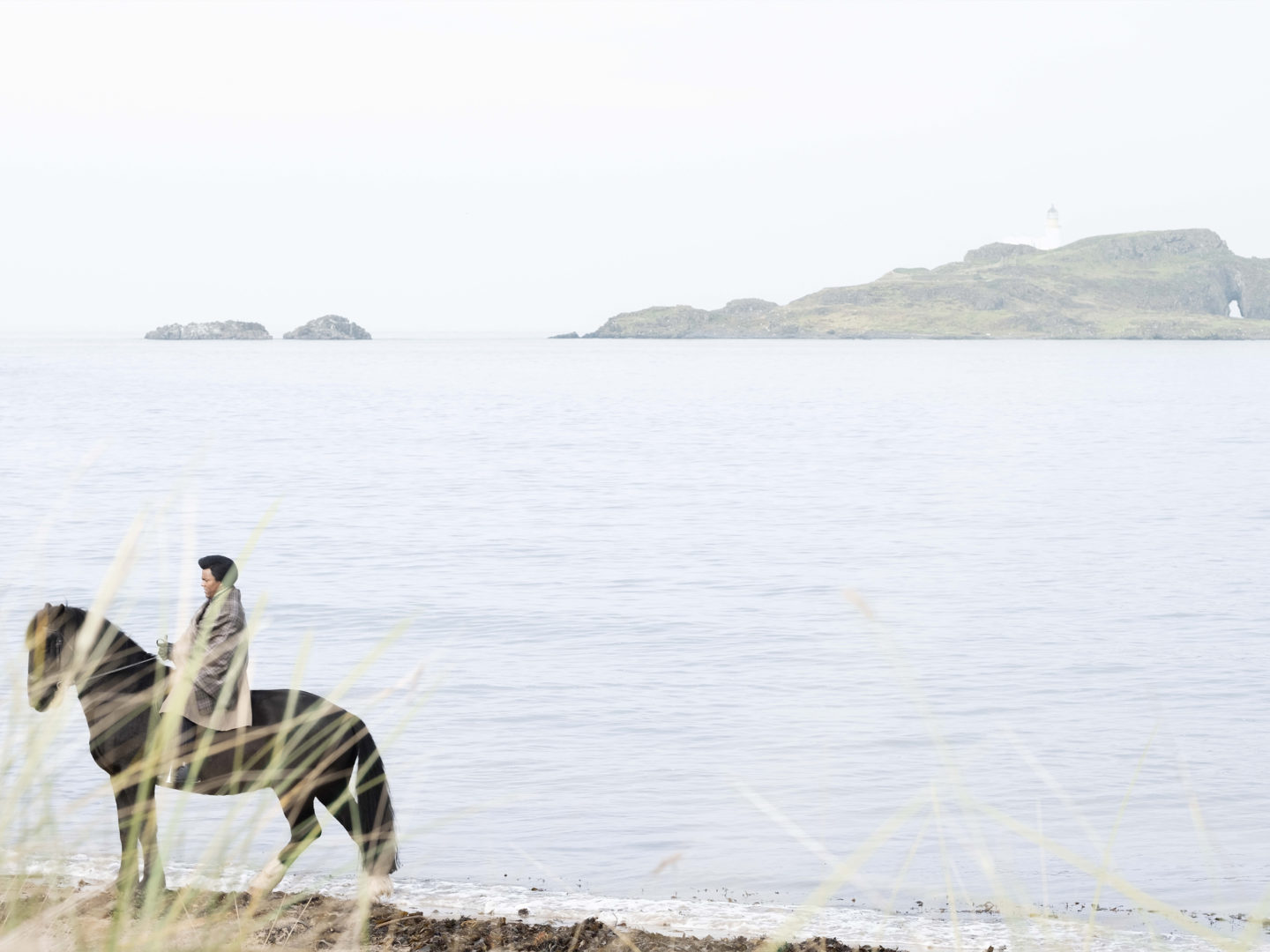
Framed photograph on matt archival paper mounted on aluminium
103.9 x 138.5 cm
40 7/8 x 54 1/2 in
Edition of 6 plus 1 artist's proof
Isaac Julien, A Star to Seer (Lessons of the Hour), 2019
More info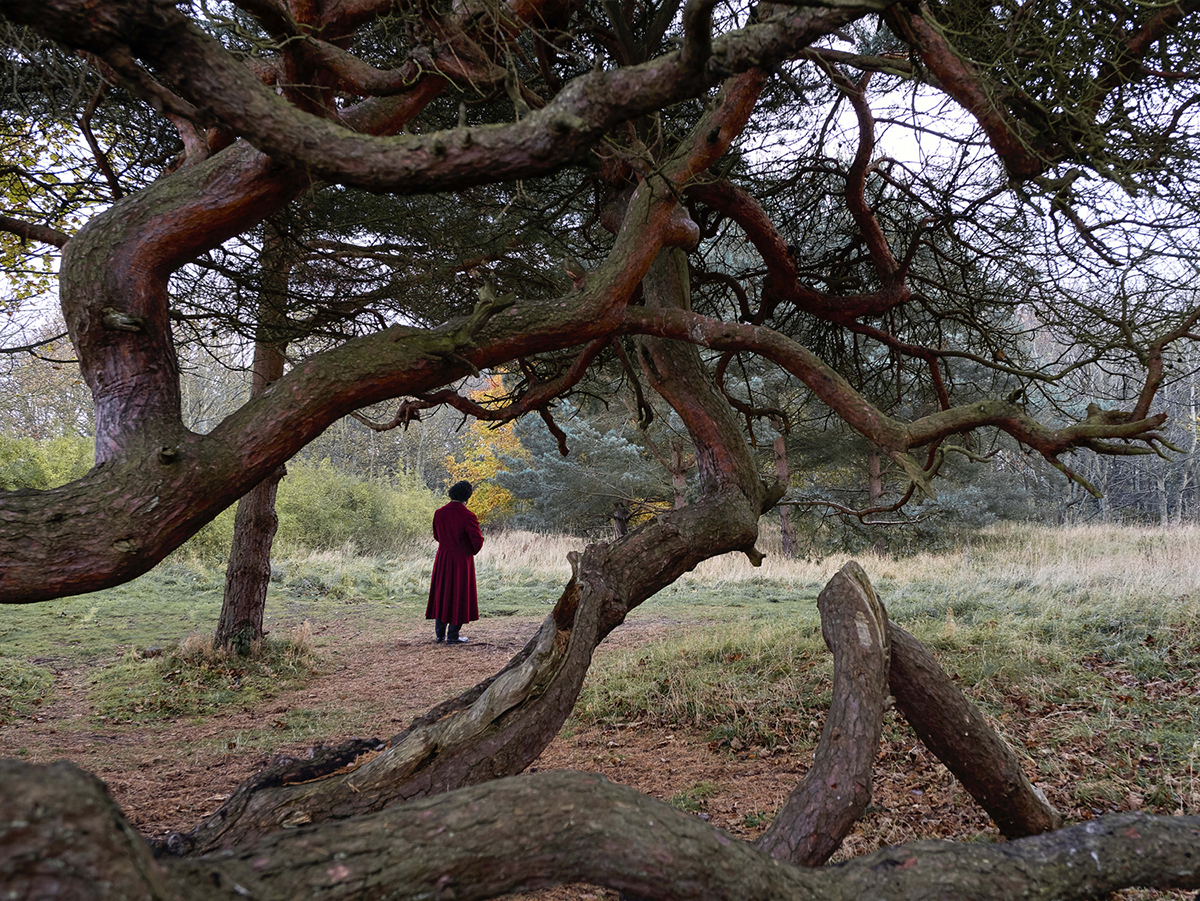
Framed photograph on matt structured paper mounted on aluminium
150 x 210 cm
59 1/8 x 82 5/8 in
Edition of 6 plus 1 artist's proof
Isaac Julien, Rapture, 1846 (Lessons of the Hour), 2019
More infoSpeaking to the Guardian in 2019, Julien said ‘There is a certain timeliness to the piece. One reason for making the work is reviewing what America is today, where it comes from.’
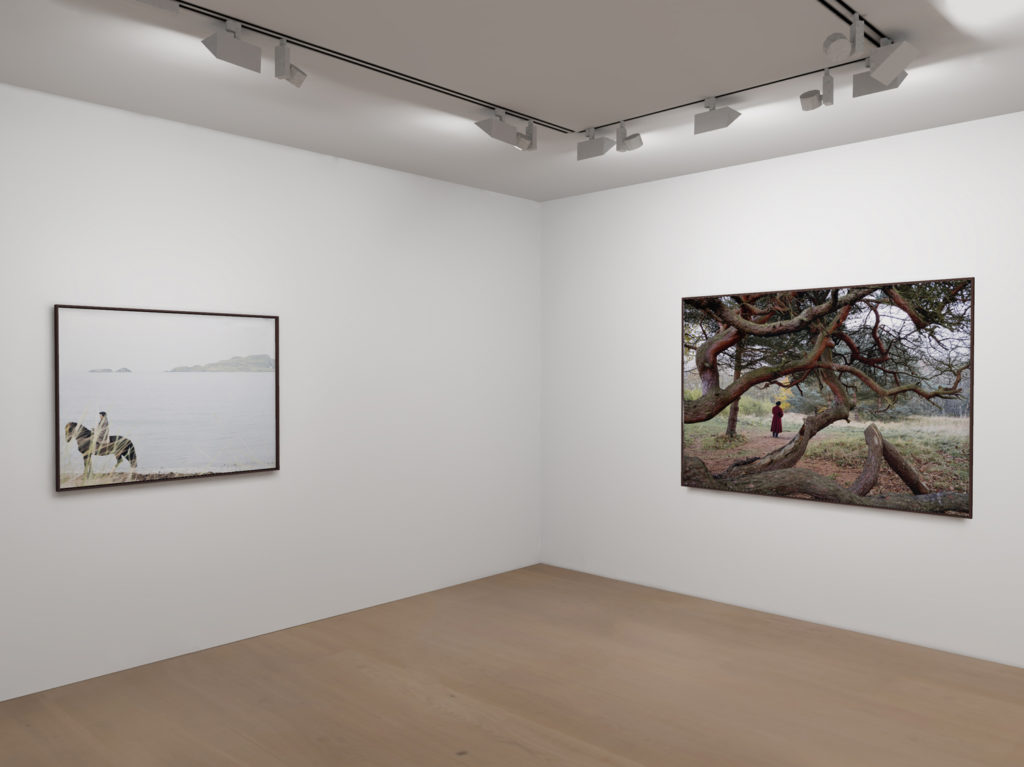
2
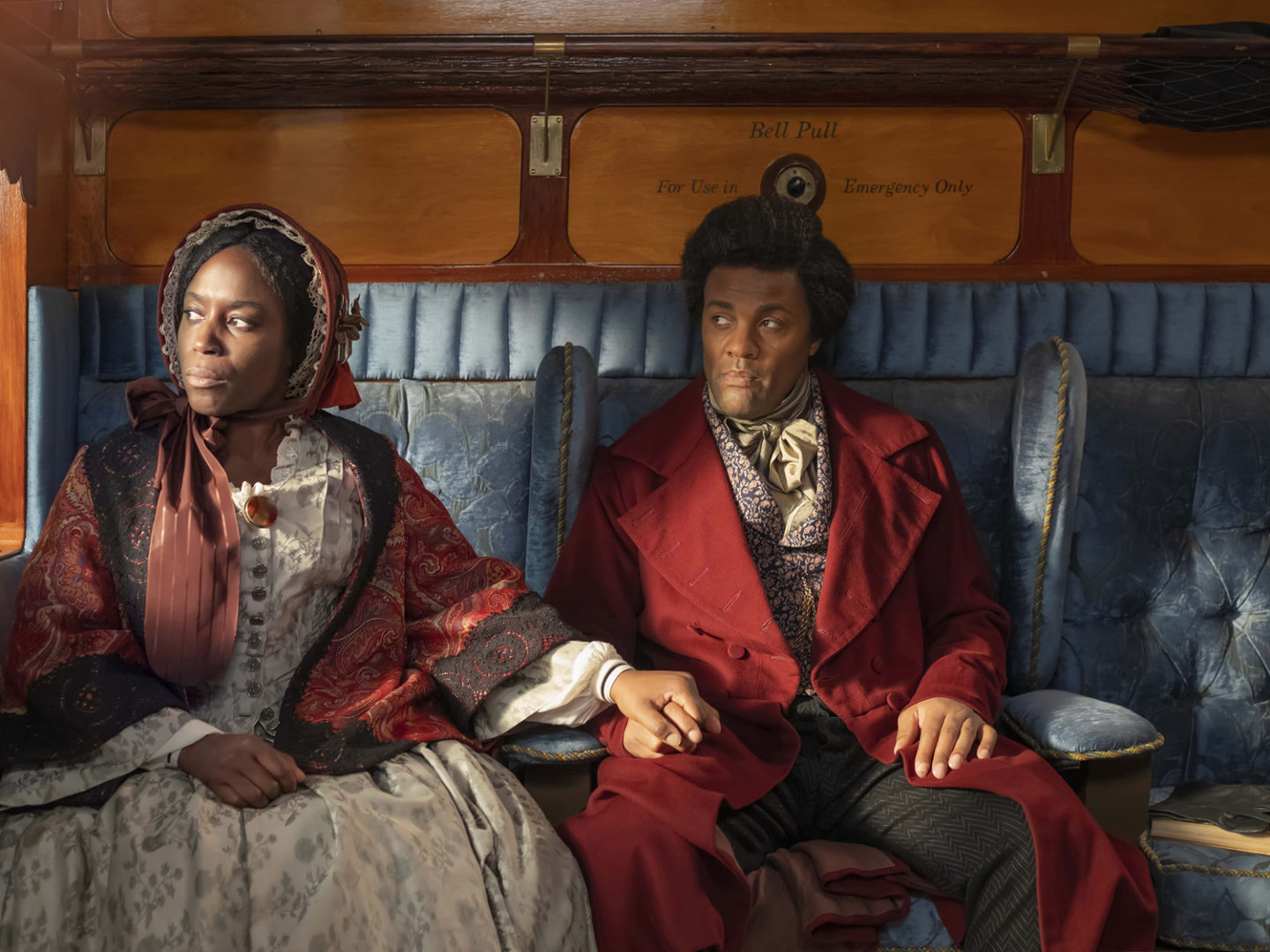
Framed photograph on gloss inkjet paper mounted on aluminium
160 x 213.3 cm
63 x 84 in
Edition of 4 plus 2 artist's proofs
Isaac Julien, North Star (Lessons of the Hour), 2019
More info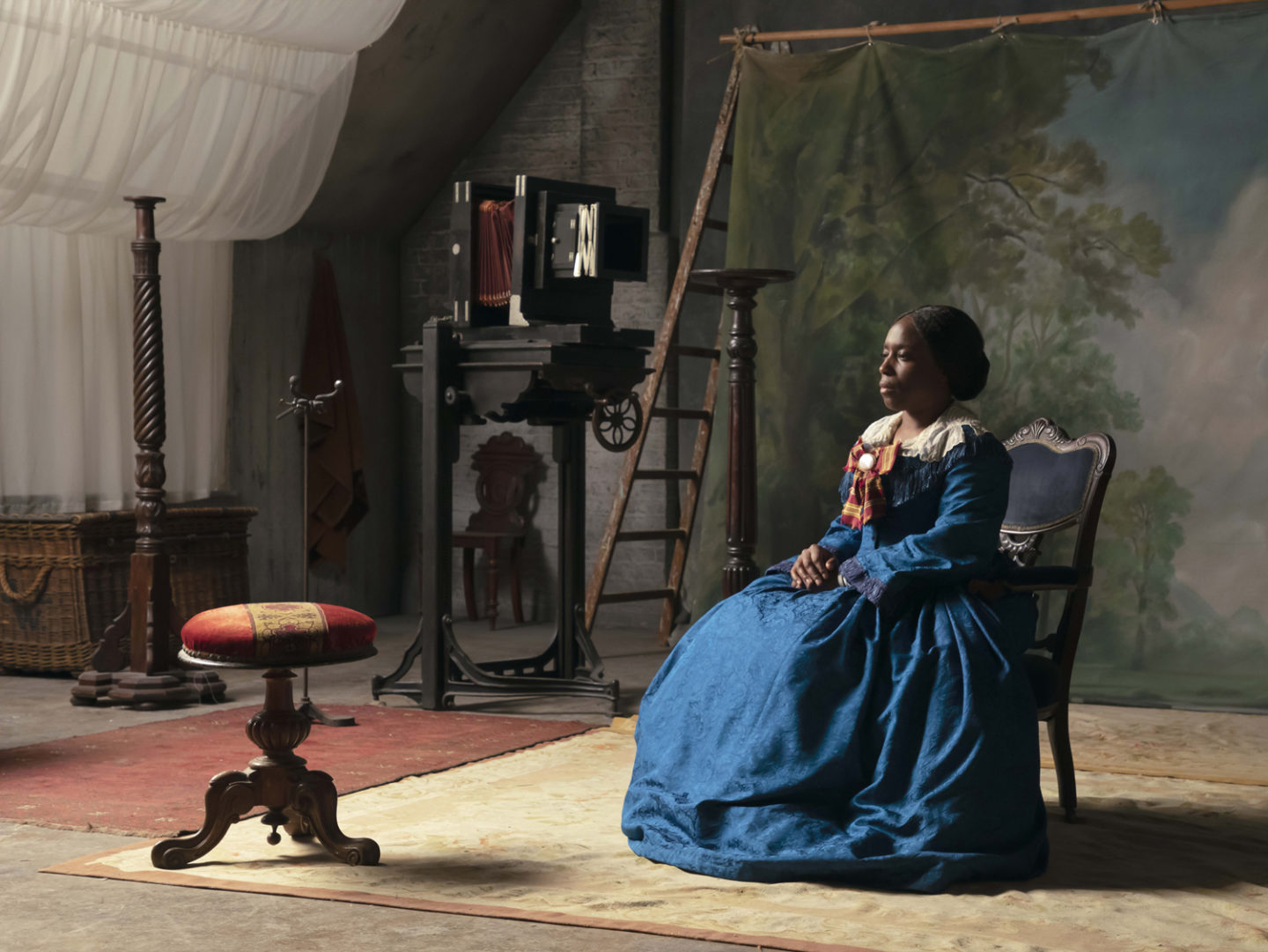
Framed photograph on gloss inkjet paper mounted on aluminium
160 x 213.3 cm
63 x 84 in
Edition of 6 plus 1 artist's proof
Isaac Julien, The Lady of the Lake (Lessons of the Hour), 2019
More info‘I pay great attention to set décor, lighting, performance, mise-en-scène, as well as editing, sonic, and visual effects to create a space for meditation on political and cultural questions.’— Isaac Julien
In 1838, at the age of 20, Douglass escaped to freedom via the Underground Railroad, a network of secret routes and safe houses established during the nineteenth century and used by enslaved African Americans to escape into free states and Canada. That year, he married Anna Murray and the couple took Douglass as their married name, inspired by the main character in Sir Walter Scott’s poem The Lady of the Lake. They remained married for 44 years until Anna’s death in 1882.
North Star refers to the newspaper The North Star, which Douglass established on his return to the US in 1847. Its motto was ‘Right is of no Sex – Truth is of no Color – God is the Father of us all, and we are all brethren.’ It was used not only to denounce slavery but to fight for the emancipation of women and other oppressed groups.
Historical visual research and the use of archival sources form the backdrop of Julien’s filmmaking, photographic and cinematic processes. The visual research is then further expanded not only while on the film set but also during the post-production stage. His works, flowing along poetic narratives, do not adhere to linearity but evolve in a musical notational choreography. He says, ‘I pay great attention to set décor, lighting, performance, mise-en-scène, as well as editing, sonic, and visual effects to create a space for meditation on political and cultural questions.’
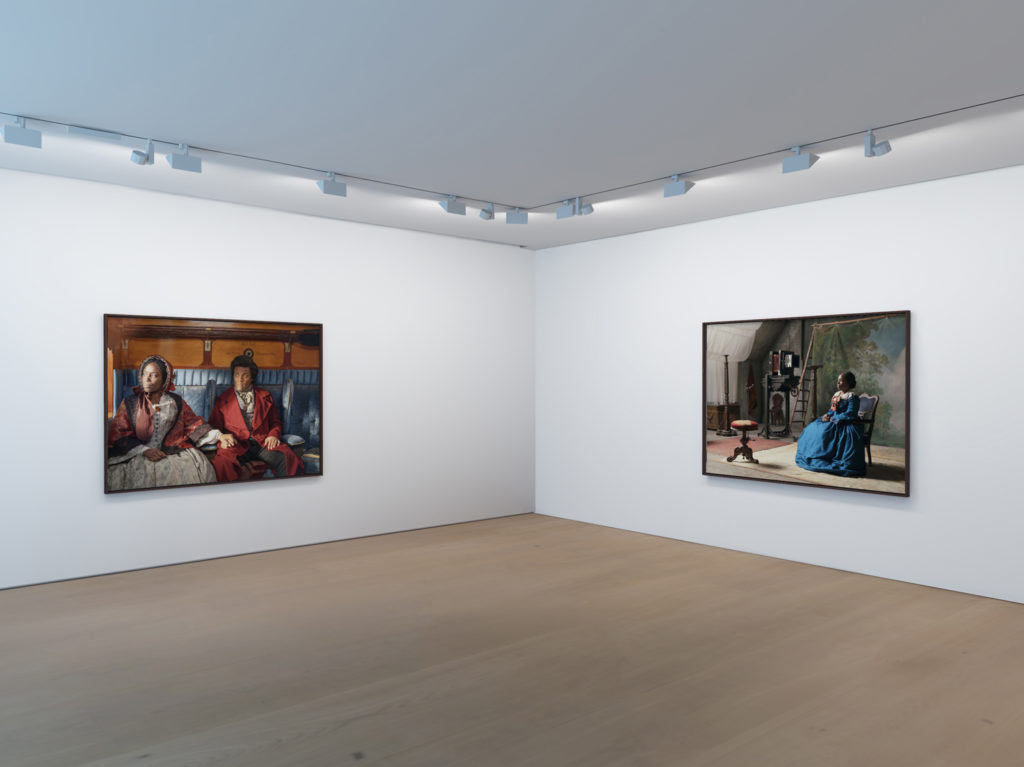
3
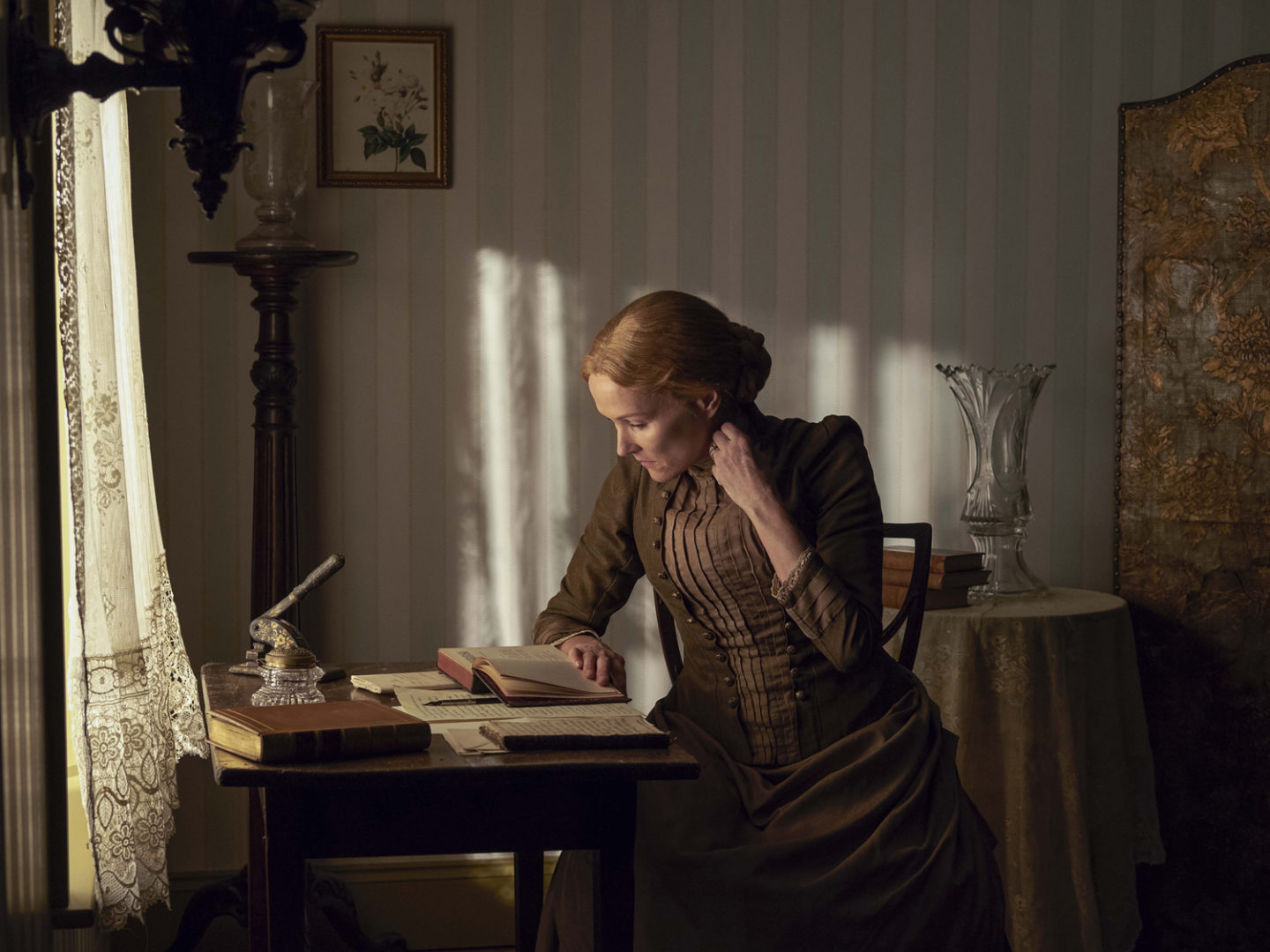
Framed photograph on gloss inkjet paper mounted on aluminium
103.9 x 138.5 cm
40 7/8 x 54 1/2 in
Edition of 6 plus 1 artist's proof
Isaac Julien, Helen Pitts, Class of 1859 (Lessons of the Hour), 2019
More infoBorn in Honeoye, New York, in 1838, Helen Pitts was a white suffragist whose parents were also activists in the abolitionist and suffragist movements. She married Douglass in 1884. While the marriage generally drew scorn from both the white and Black communities, the Douglasses were firm in their convictions. ‘Love came to me, and I was not afraid to marry the man I loved because of his color,’ Helen said.
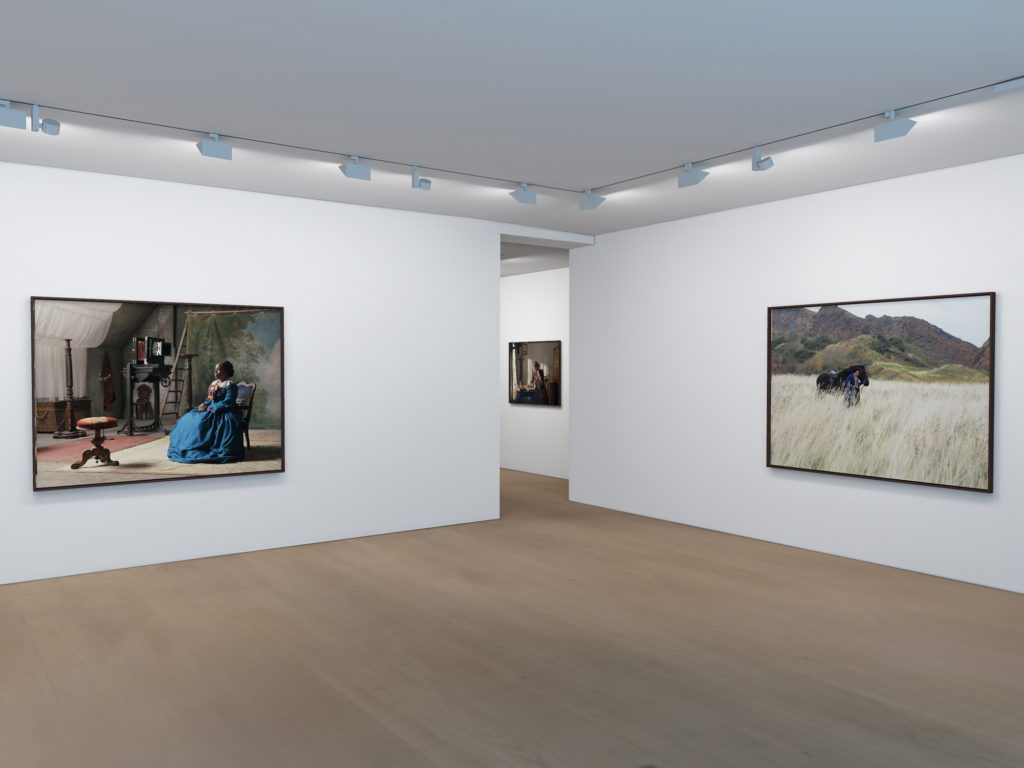
4
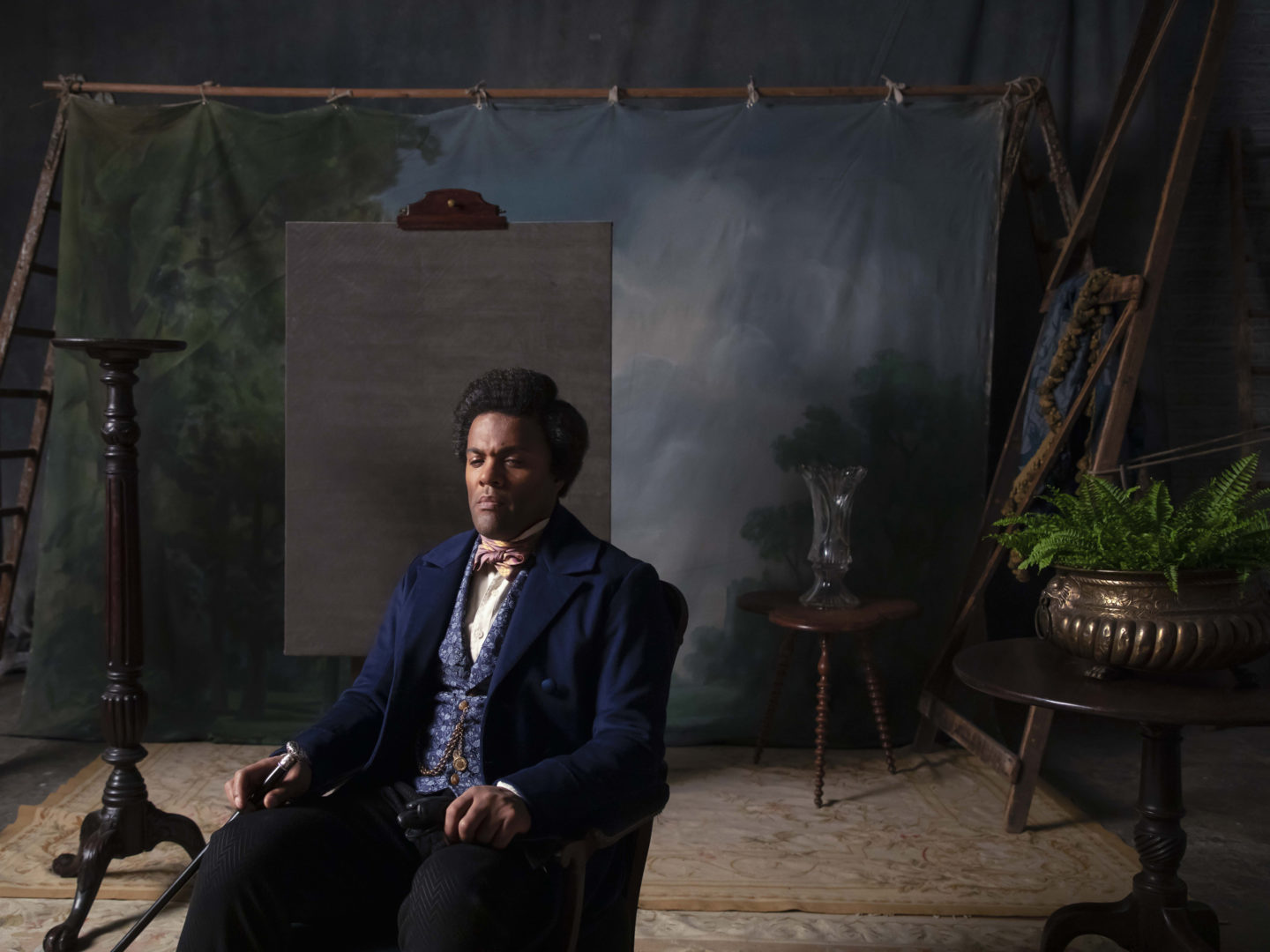
Framed photograph on gloss inkjet paper mounted on aluminium
57 x 76 cm
22 1/2 x 29 7/8 in
Edition of 6 plus 1 artist's proof
Isaac Julien, J.P. Ball Studio, 1867 Douglass (Lessons of the Hour), 2019
More info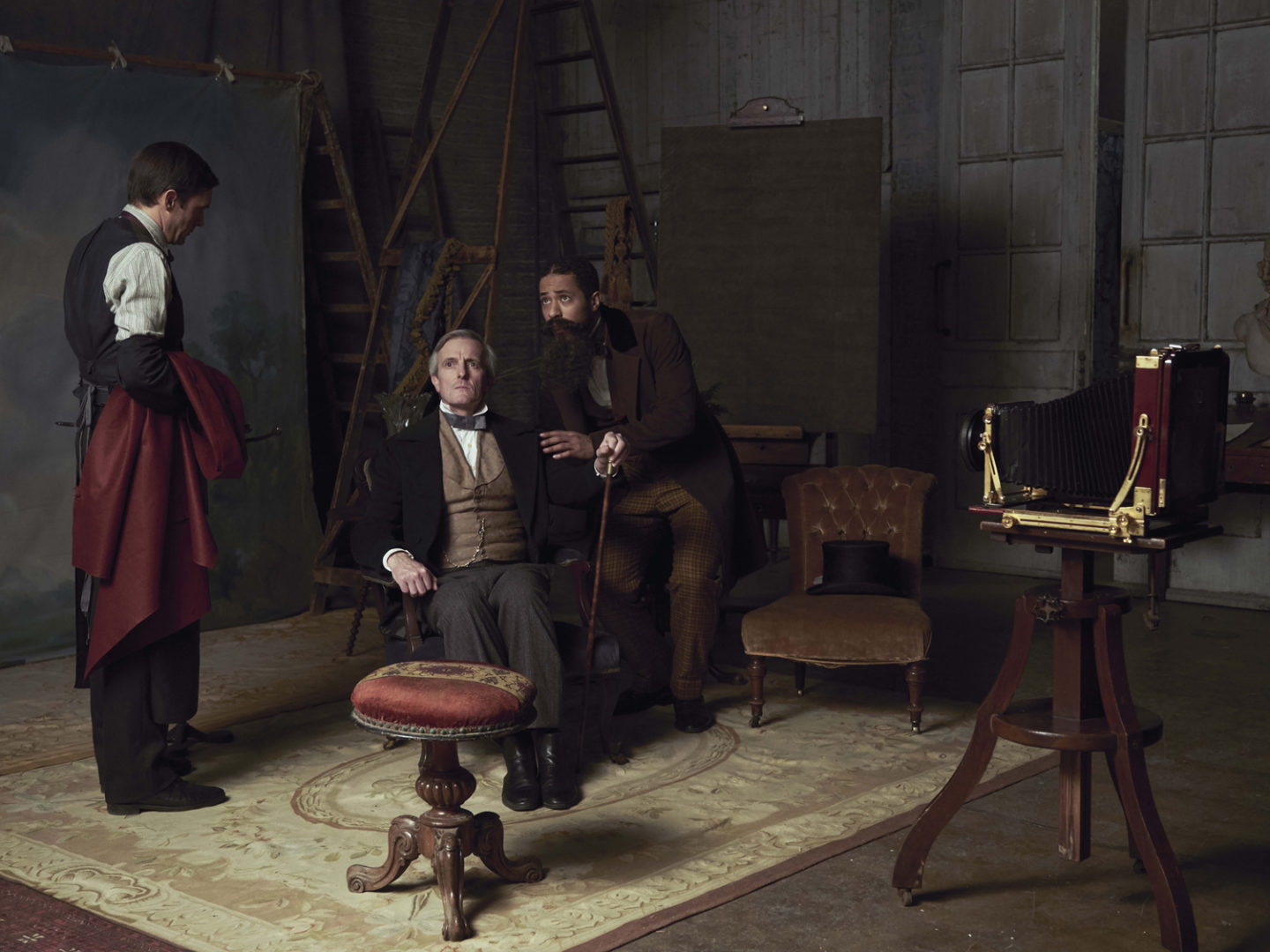
Framed photograph on gloss inkjet paper mounted on aluminium
103.9 x 138.5 cm
40 7/8 x 54 1/2 in
Edition of 6 plus 1 artist's proof
Isaac Julien, J.P. Ball Studio, 1867 (Lessons of the Hour), 2019
More info‘He was interested in photography because of the role of autonomy it gave him over his own self-representation, as opposed to the ones that were being captured and stereotyped.’— Isaac Julien
Frederick Douglass had a passion for photography and publicly lectured on the subject. He was a prominent proponent of the medium as a means by which Black people could control their likenesses beyond caricature. Some of his ideas were precursors to those of the influential German philosopher and critic Walter Benjamin, whose book, The Work of Art in the Age of Mechanical Reproduction, was published 75 years later. JP Ball was one of the first African American prominent photographers, a friend of Douglass and a campaigner for anti-lynching.
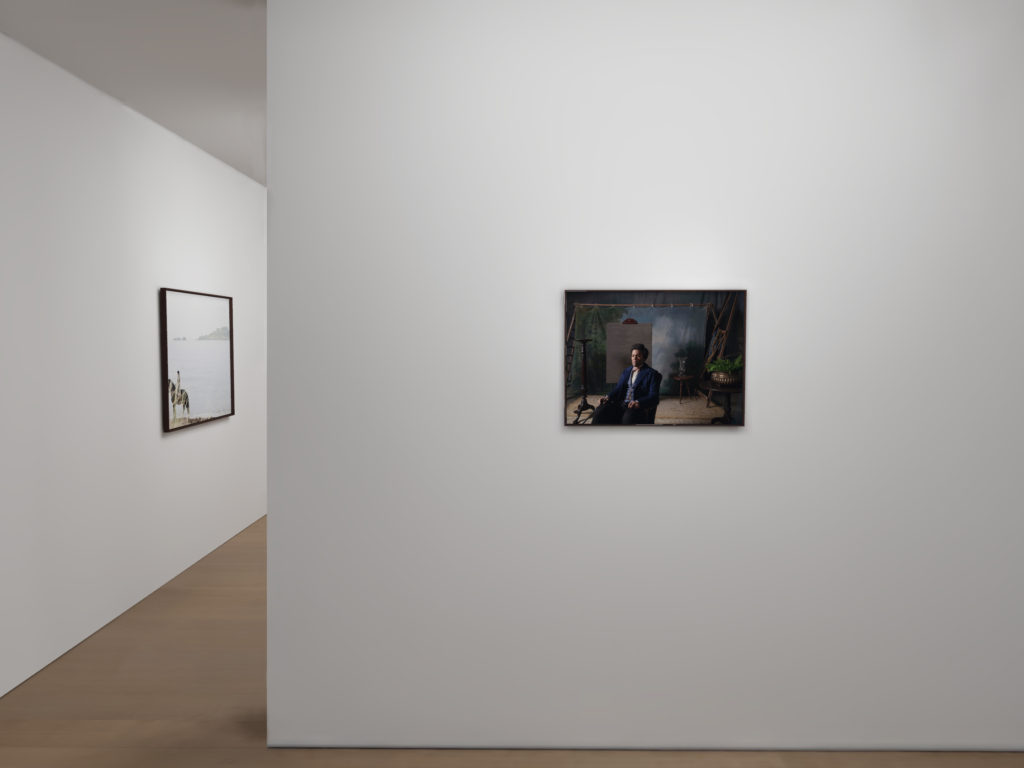
5
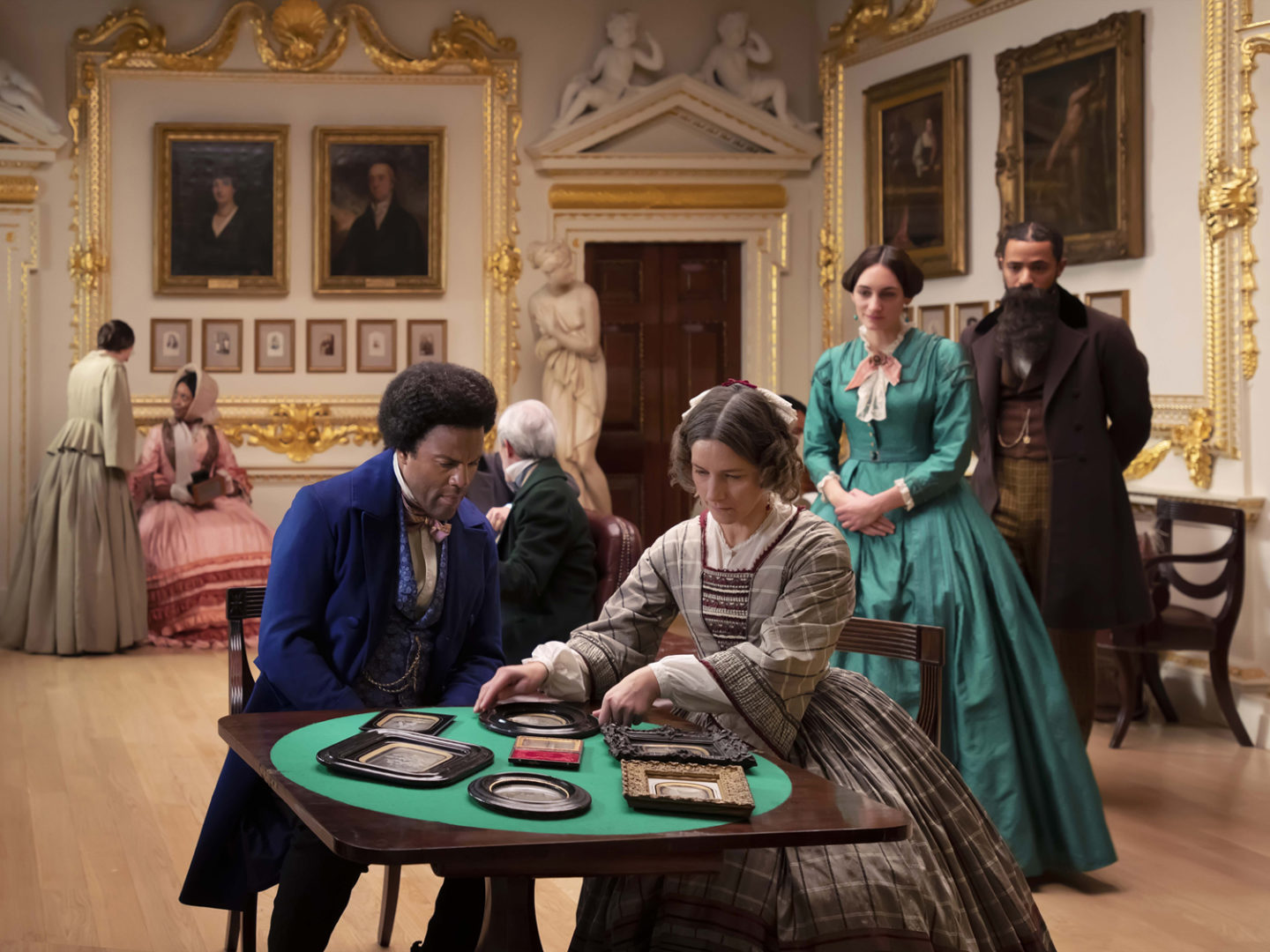
Framed photograph on gloss inkjet paper mounted on aluminium
57 x 76 cm
22 1/2 x 29 7/8 in
Edition of 6 plus 1 artist's proof
Isaac Julien, J.P. Ball Salon, 1867 (Lessons of the Hour), 2019
More info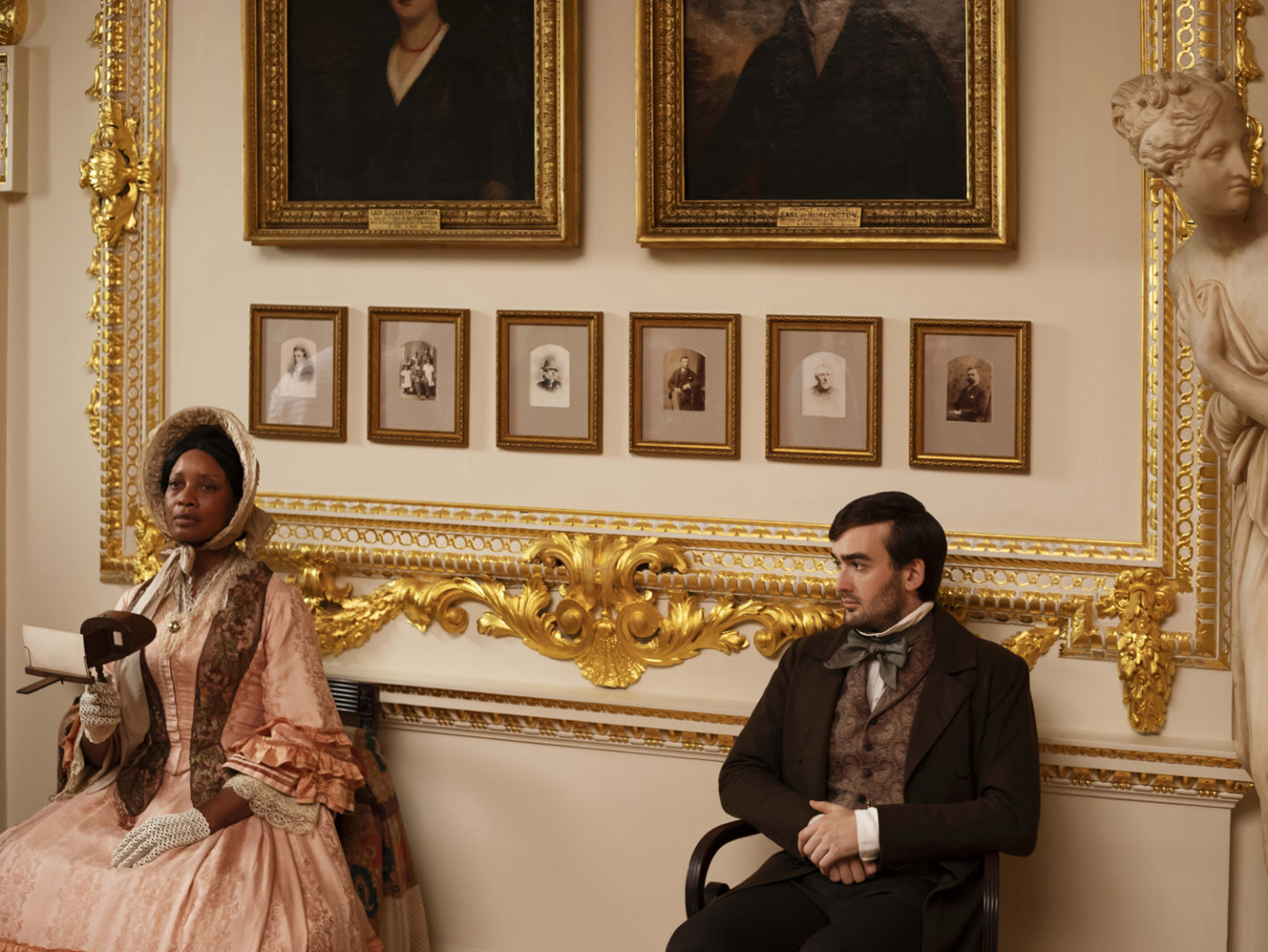
Framed photograph on gloss inkjet paper mounted on aluminium
57 x 76 cm
22 1/2 x 29 7/8 in
Edition of 6 plus 2 artist's proofs
Isaac Julien, Autoportrait Parlour (Lessons of the Hour), 2019
More info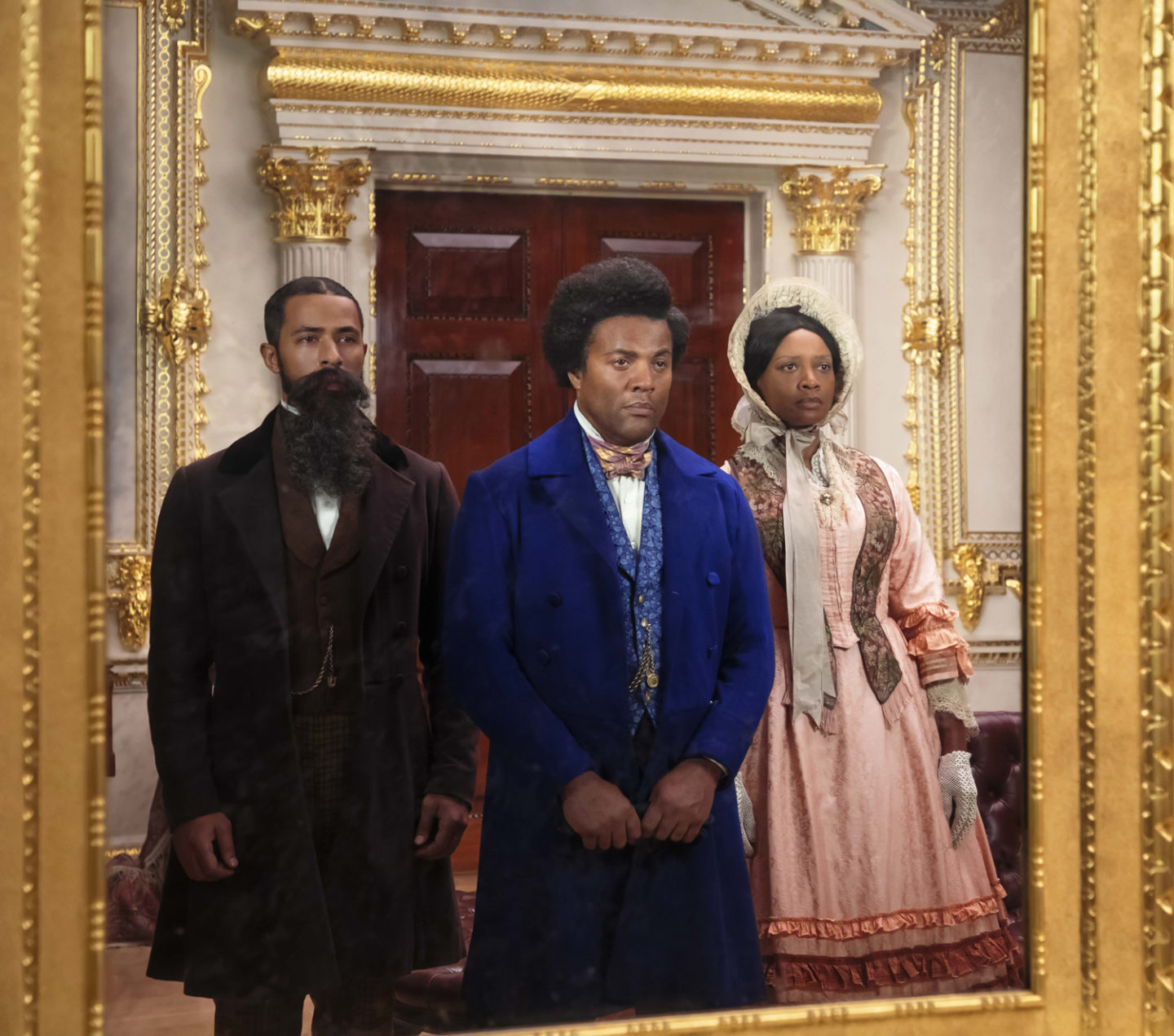
Framed photograph on matt archival paper mounted on aluminium
100 x 113 cm
39 3/8 x 44 1/2 in
Edition of 6 plus 1 artist's proof
Isaac Julien, Serenade (Lessons of the Hour), 2019
More infoIn Lessons of the Hour, JP Ball’s photographic salon and studio are restaged and reimagined as expressions of the utopian values and ideas that Douglass and his contemporaries shared.
Speaking to the Guardian in 2019, Julien commented, ‘Douglass was interested in photography because of the role of autonomy it gave him over his own self-representation, as opposed to the ones that were being captured and stereotyped; Black men and women were being presented in derogatory imagery. He saw photography as a saviour of representing a regime of truth or person.’
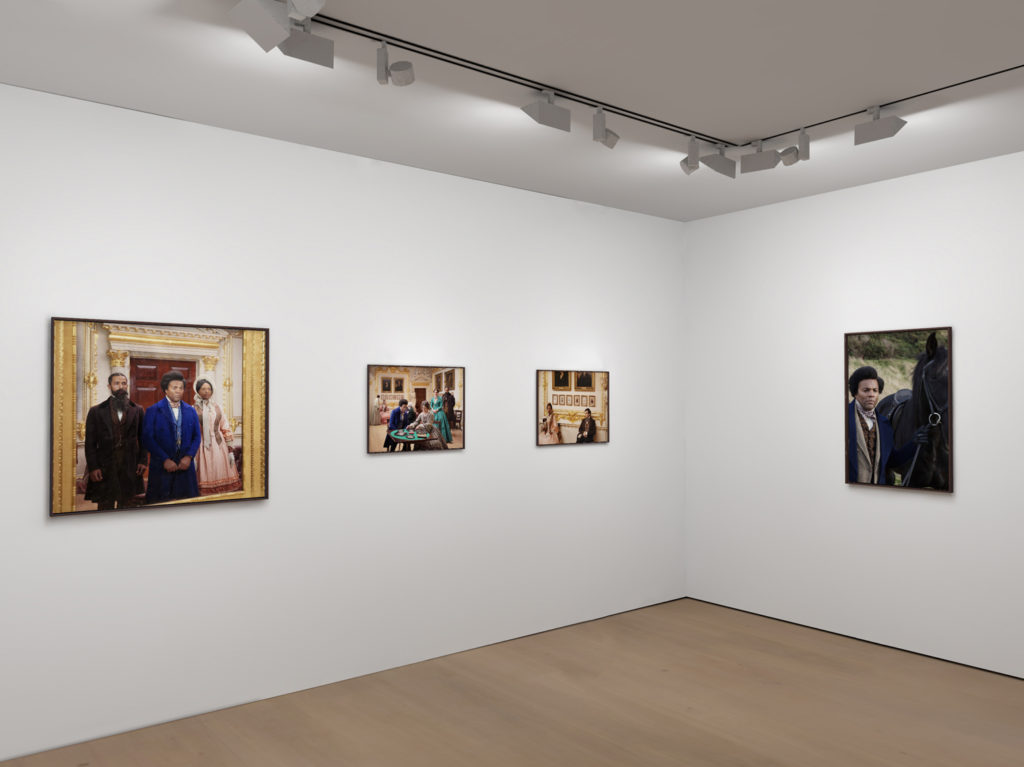
7
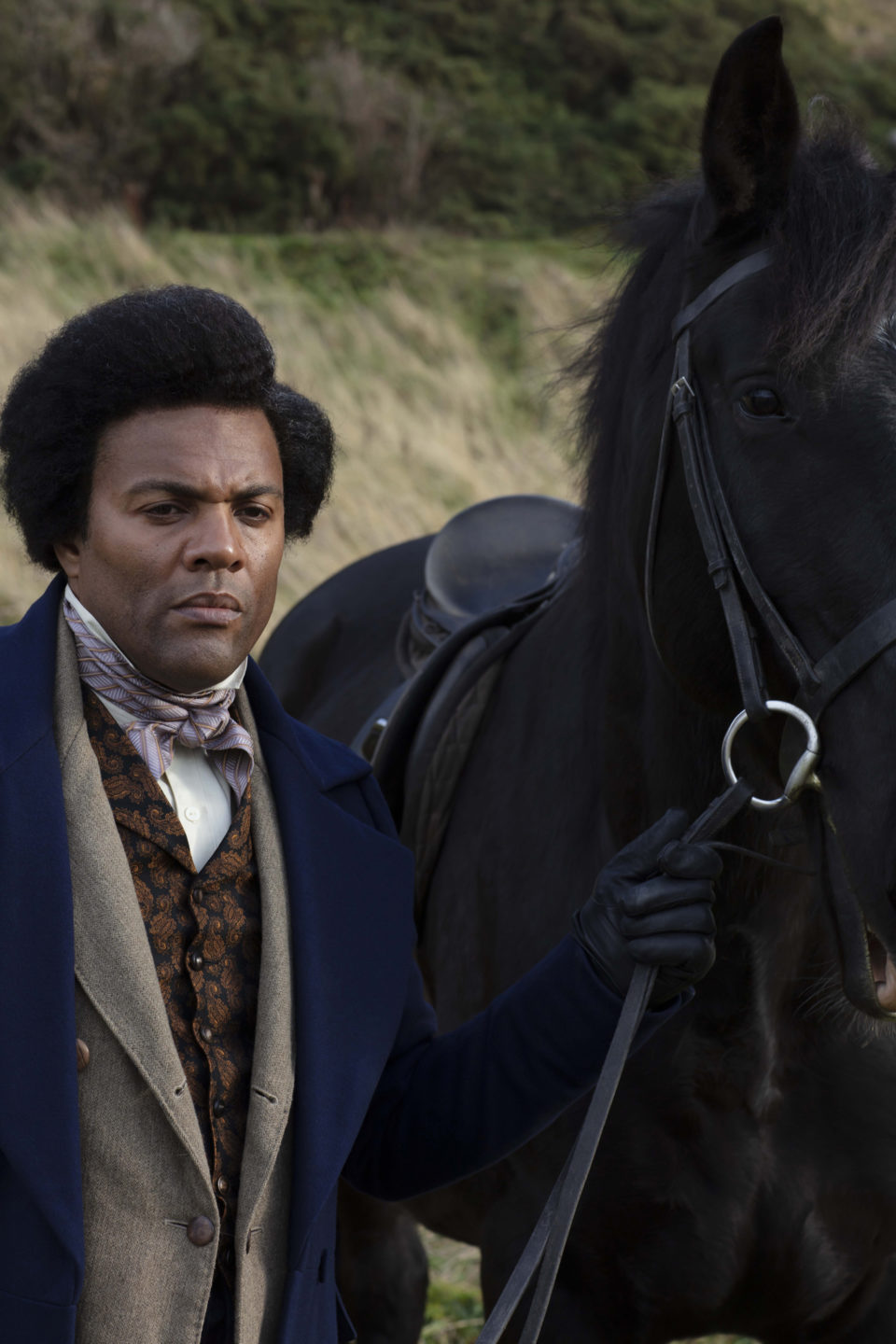
Framed photograph on matt archival paper mounted on aluminium
110 x 73.3 cm
43 1/4 x 28 7/8 in
Edition of 6 plus 1 artist's proof
Isaac Julien, A Chattel Becomes A Man (Lessons of the Hour), 2019
More info‘I breathe, and lo! the chattel becomes a man.’— Frederick Douglass
The title A Chattel Becomes A Man is derived from a letter written by Douglass from the Victory Hotel, Belfast, to William Lloyd Garrison on 1 January 1846. Douglass spent several months in Ireland as part of his first visit to the UK, travelling to England and Scotland, where he remained to escape being re-enslaved. During this time he delivered more than 300 lectures. In the letter he wrote:
‘Instead of the bright blue sky of America, I am covered with the soft grey fog of the Emerald Isle. I breathe, and lo! the chattel becomes a man. I gaze around in vain for one who will question my equal humanity, claim me as his slave, or offer me an insult. I employ a cab—I am seated beside white people—I reach the hotel—I enter the same door—I am shown into the same parlor—I dine at the same table—and no one is offended.’
At this point Douglass was still a fugitive enslaved man until, in December 1846, abolitionists and Quakers Ellen and Anna Richardson bought Douglass’ manumission for £150, allowing him to return home as a free man.
Lessons of the Hour, ten-screen installation, 2019
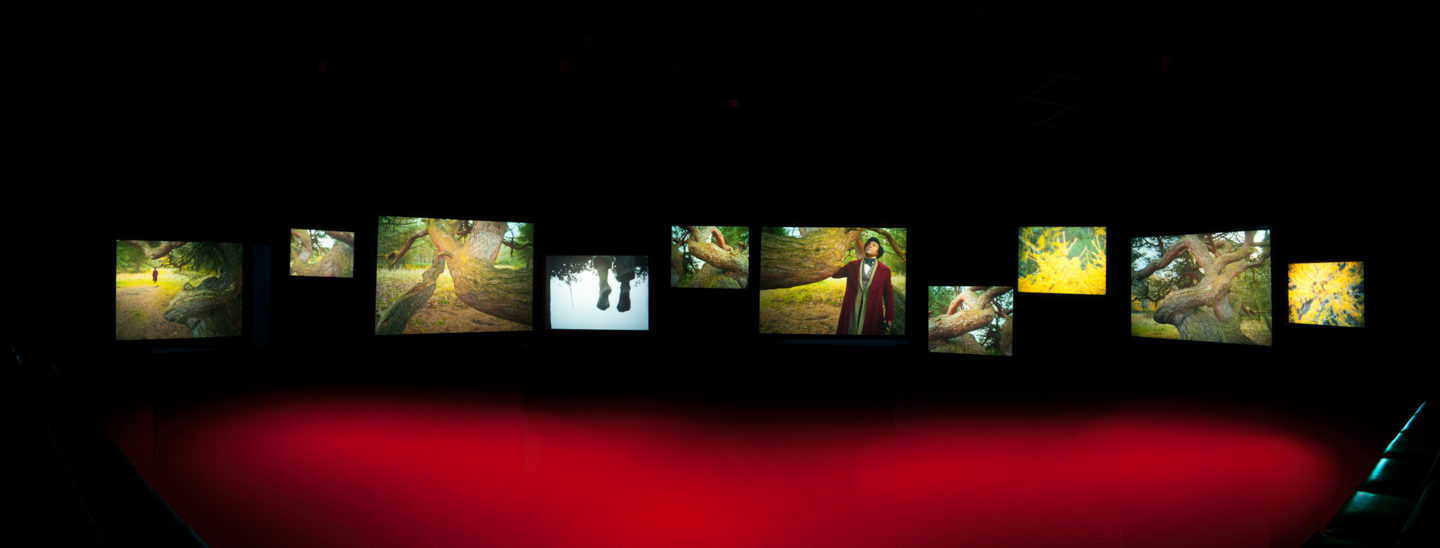
Ten-screen installation:
35mm film and 4K digital, colour, 7.1 surround sound
duration: 28'46''
Edition of 6 plus 1 artist's proof
Isaac Julien, Lessons of the Hour, ten-screen installation, 2019
More infoCommissioned by the Memorial Art Gallery, University of Rochester, New York, with the partnership of the Virginia Museum of Fine Arts, Richmond, the ten-screen Lessons of the Hour is an immersive installation, hung salon-style to create what Julien describes as a ‘moving image montage’. The work’s presentation not only echoes the picture-hanging conventions of the era but allows the artist to draw connections between many images at once without relegating any particular detail to the background. It was shot with 35mm film and 4k digital technology at sites in the United States and United Kingdom, including Washington, DC, at The Frederick Douglass National Historic Site, where Douglass lived late in life, and where his house in Cedar Hill has been kept conserved as it was during the abolitionist’s time. In Scotland, where Douglass was an active member of the ‘Send Back the Money’ movement, and where he delivered a number of anti-slavery speeches, Julien has reconstructed scenes of Douglass’ life. His speeches have been restaged inside London’s Royal Academy of Arts to an audience which includes both nineteenth century characters, and also contemporary, real-life characters such as scholars and Royal Academicians. Douglass delivered more than 300 lectures in England, Scotland and Ireland as he sought to affirm his struggle for equality as a global citizen, who was very much ahead of his time.
Following its premier at Memorial Art Gallery in 2019, Lessons of the Hour has been shown at venues including SCAD Museum of Art, Savannah, Georgia. Its West Coast debut will take place at McEvoy Foundation for the Arts, San Francisco, California, 14 October 2020–13 March 2021.
Lessons of the Hour, London 1983 (Who Killed Colin Roach?), 1983
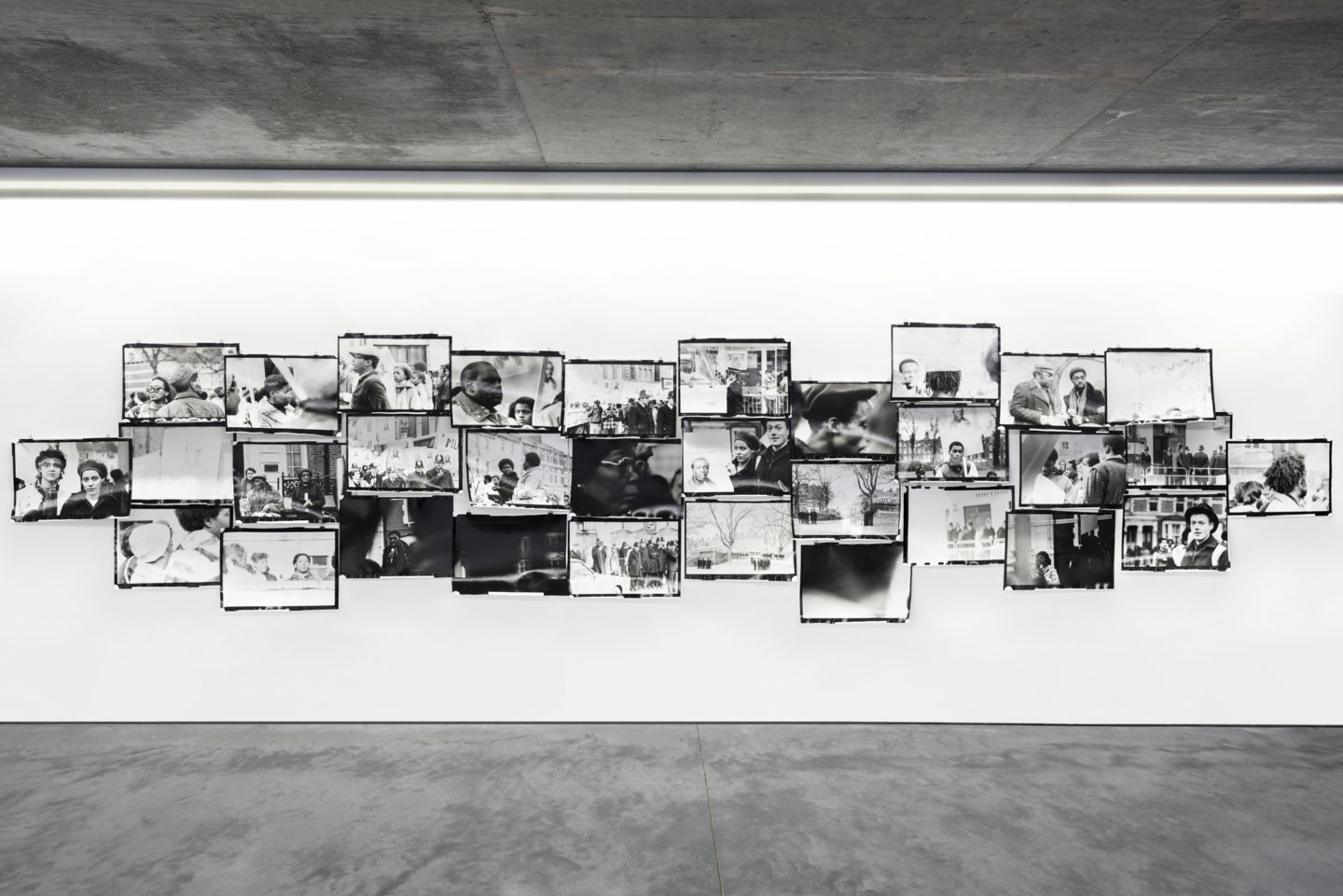
Photographic assemblage of 32 Black and White Ilford Classic FB silver gelatin prints
Each: 45 x 64 cm
17 3/4 x 25 1/4 in
Isaac Julien, Lessons of the Hour, London 1983 (Who Killed Colin Roach?), 1983
More info‘It continues the quest for equality that was Douglass’ lifelong ambition.’— Isaac Julien
Who Killed Colin Roach? is Isaac Julien’s first film, which reflects upon the death of Colin Roach, a 23 year-old who was shot dead at the entrance of a police station in East London, in 1982. Even though the police claimed Roach had committed suicide, evidence showed otherwise. These black-and-white photographs, presented as a single work, were rediscovered by the artist in 2018. In an article published by the Royal Academy in June 2020, Julien comments, ‘Whenever I see the photographs I slightly gulp; I think “Oh my god, it could be my mother,” because they were all ordinary, working class Black people. There was no political agenda; they were just trying to find out what had happened to their son. I was so moved by this demonstration that I decided it would be important to document it, and at least try to make a work which could be used by his family. That was my main intention, anyway.’
Commenting in the Guardian in 2019, Julien explained that this early work meditates on the continued ‘quest for equality that was Douglass’ life-long ambition, while also evoking the current Black Lives Matter movement.’
Isaac Julien
About the artist
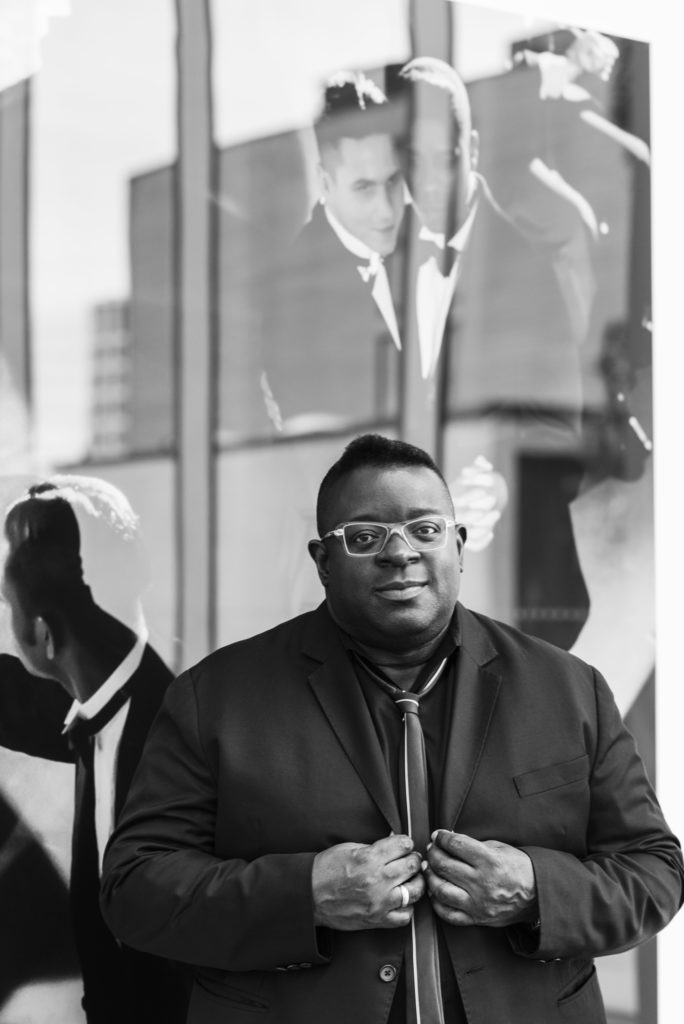
Isaac Julien, CBE RA (born 1960) is a critically acclaimed British artist and filmmaker. In 2018, Julien joined UC Santa Cruz where he is the distinguished professor of the arts and leads the IJ Lab together with Arts Professor Mark Nash. Recent international solo exhibitions include: Isaac Julien: Western Union: Small Boats, Neuberger Museum, New York (2020); Isaac Julien: Frederick Douglass: Lessons of the Hour, SCAD Museum of Art, Savannah (2019); Looking for Langston at Tate Britain (2019); and Playtime at LACMA (2019). Julien has previously exhibited at venues including Museum of Modern Art, New York (2013), Art Institute of Chicago (2013), Museum of Contemporary Art, San Diego (2012), and Pompidou Centre Paris (2005).
Vortic Installation
Victoria Miro worked with the virtual art platform Vortic to capture these works – as well as their physical gallery spaces in London – photogrammetrically with the latest high-resolution 3D scanning technology.
Vortic’s software and rendering techniques, which have never before been used in the industry, enable Victoria Miro to present exhibitions of 2D and 3D works in the very highest quality. These works can be experienced in Virtual Reality via the Vortic Collect app.
Learn more about Vortic here.
For enquiries regarding featured works and other matters, please contact the below:
Victoria Miro: salesinfo@victoria-miro.com


